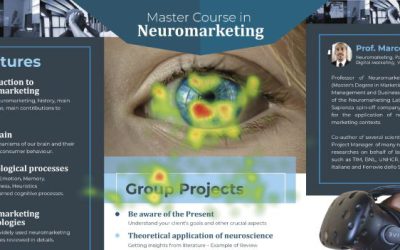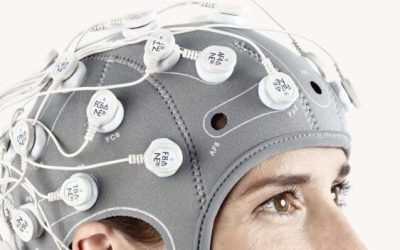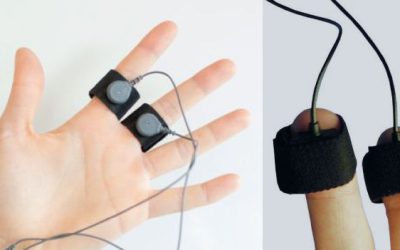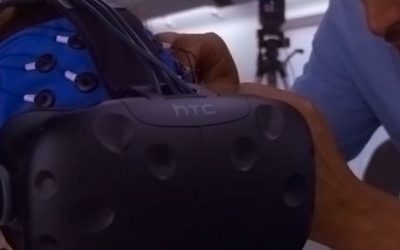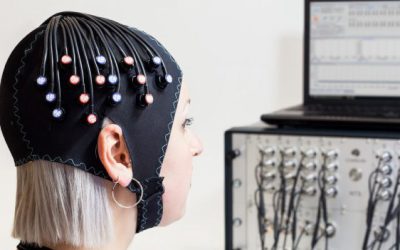Implicit reaction time tests (IRTs) are a family of tests that allow Neuromarketing experts to explore people’s implicit attitudes.
The IRTs are based on psychological scientific literature and although in recent years they have generated great success in the Neuromarketing field, it should be noted that they are not recently developed techniques.
On the contrary, IRTs have been used by experts for more than 20 years. In particular, the first Implicit Association Test (IAT), one of the most popular tests among those attributable to the family of IRTs, was developed by Greenwald, McGhee, & Schwartz in 1998.
How IRTs work [Neuromarketing]
Our brain contains a semantic network, a network of interconnected knowledge, where each concept present in memory represents a “node” and has thousands connections with other “nodes” (concepts).

“A semantic network of interconnected knowledge”.
When people are exposed to a certain concept, the related node in the semantic network is activated and triggers a phenomenon known as “spreading activation“, or rather the automatic and involuntary activation of other similar/related nodes (concepts).
Thinking for example of the Microsoft brand, a number of other concepts such as the computer, Bill Gates, Outlook, and also emotional aspects associated with our relationship with the brand could come to mind automatically. This is where reaction times come into play, as research shows that we are faster at reacting to a similar / related stimulus than to a different / unrelated stimulus.
Going back to Microsoft’s example, if the Microsoft-related semantic network is active, we will be quicker to react to a computer image than to a banana image. It is no coincidence that this family of techniques, which is based on reaction times, is called “Implicit Reaction Time Tests” (IRTs).
How is it possible to access the implicit attitudes of people with IRTs? [Neuromarketing]

How to explore people’s implicit attitudes
In general, IRTs allow you to explore people’s implicit attitudes because respondents are unable in any way to use their conscious thinking during response and / or association tasks.
This unique feature is made possible by two simple rules that most IRTs have in common:
- The responses obtained after about 600 / 700ms from the manifestation of a stimulus are considered contaminated by conscious thought processes and consequently will be excluded from the analysis.
- The responses obtained between 0 and 200ms from the manifestation of a stimulus are considered too fast, as they would not even allow the simple detection of the stimulus, and will therefore be excluded from the analysis.
Neuromarketing has always paid great attention to all those processes that operate below the threshold of awareness, but which at the same time are capable of influencing consumer decisions and guiding their behavior and in this context the family of techniques of the IRTs certainly plays a key role.
Most used IRTs: Implicit Association Test (IAT), Affective Priming Task (APT), Go / NoGo (GNAT)
What specifically are the tests most used by Neuromarketing experts among those attributable to the family of IRTs?
Implicit Association Test (IAT)
There are two types of IAT, traditional and single.
Traditional or classic IAT, the most widespread IRTs technique of all, is generally used to identify which brand, between two competing brands, is most associated with a concept of interest, such as the concept of “innovation”.
The single IAT differs from the previous one (traditional or classic IAT) in that it does not require two categories, but only requires one. This type of test is very useful to apply in those cases in which we are interested in measuring the strength of implicit attitudes in absolute terms, without comparing it with another category.
Affective Priming Task (APT)
The affective priming Task (APT) or affective priming, originally developed by Fazio, Jackson, Dunton and Williams in 1995, is similar to the IAT, but in this case the stimuli to be categorized (target stimuli) are preceded by a “prime” stimulus which remains visible on the screen for a very short time.
If the target stimulus, for example the Coca-Cola brand, is preceded by the word prime “refreshing”, the reaction time will be faster than if the target stimulus is represented by the Amazon brand.
Go/NoGo (GNAT)
The Go / noGo test (GNAT) measures the intensity of the mental association between a target concept (ie Amazon) and two extremes of an evaluative dimension (for example, “reliable” and “unreliable”). Participants must respond if the word presented on the screen is associated with a target category or with one of the two categories represented by the extremes of the evaluative dimension.
The peculiarity is that the respondent is free not to answer (noGO) if he perceives the word on the screen as not belonging to any of the available categories.
Neuromarketing e gli Implicit Reaction Time Tests (IRTs)

Carrying out an IAT from a smartphone
The following are the main aspects that have contributed to the success of the techniques attributable to the Implicit Reaction Time Tests (IRTs) family in the field of Neuromarketing:
- Processes below the threshold of awareness: possibility to explore the implicit attitudes of people through the analysis of reaction times.
- Duration of the test: the tests last a few minutes and do not require particular efforts on the part of the respondents.
- Parallel tests and without geographical constraints: it is possible to proceed with the collection of data on multiple participants who perform the test simultaneously in different parts of the world.
- Cross-platform: The tests can be performed on most computing devices (desktop computers, laptops, tablets and smartphones) and most operating systems (Windows, Apple IOS, Android, Windows Mobile, and so on).
- Accessibility: IRTs software have very low costs.
Run a test to better understand how IRTs work
By clicking on the button below you can start an IAT test, available on the Harvard University website.






